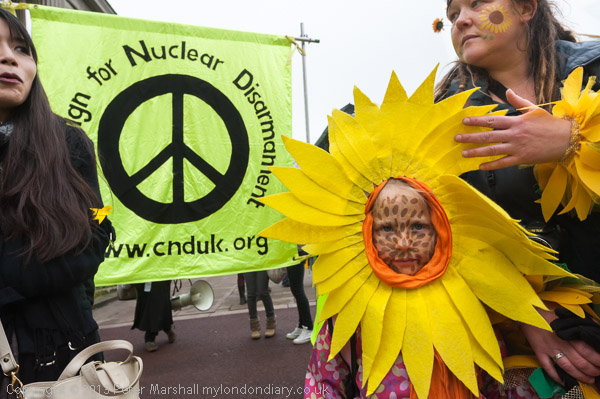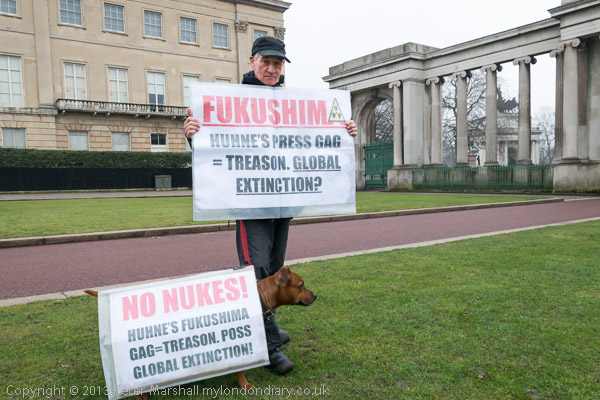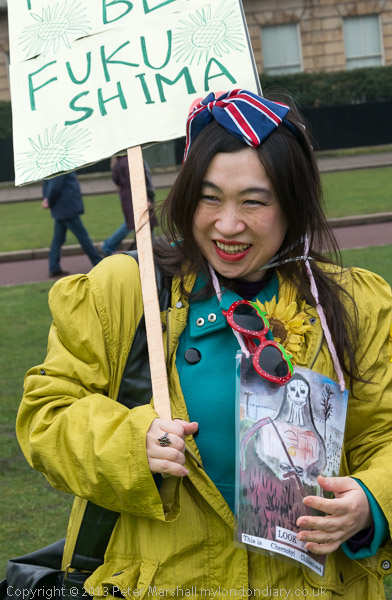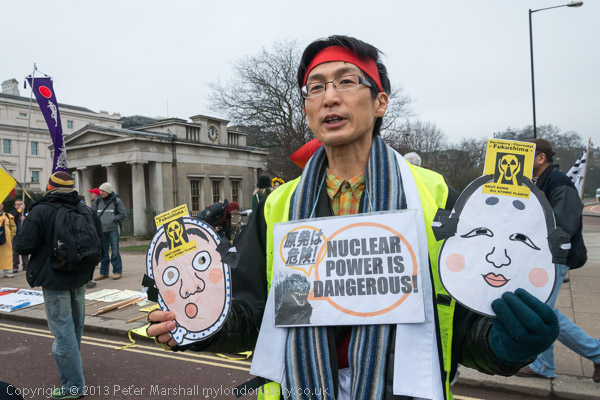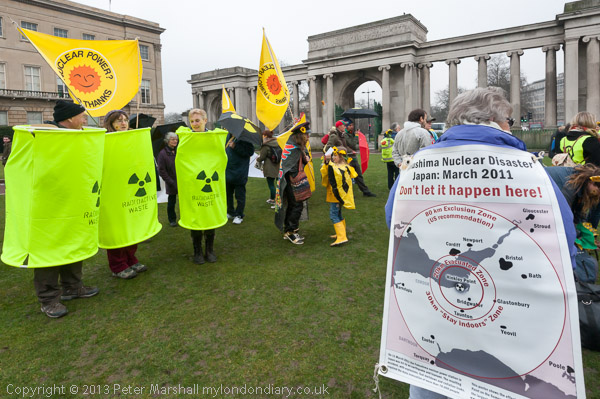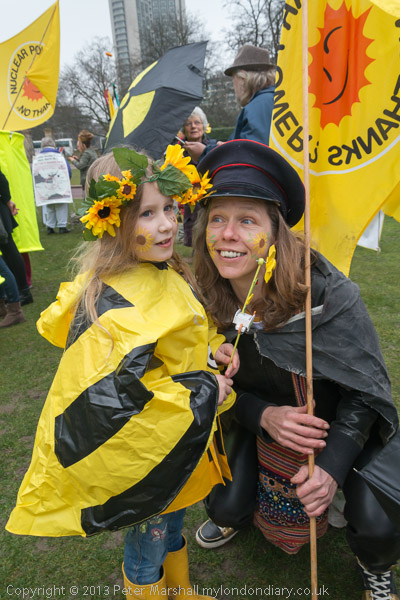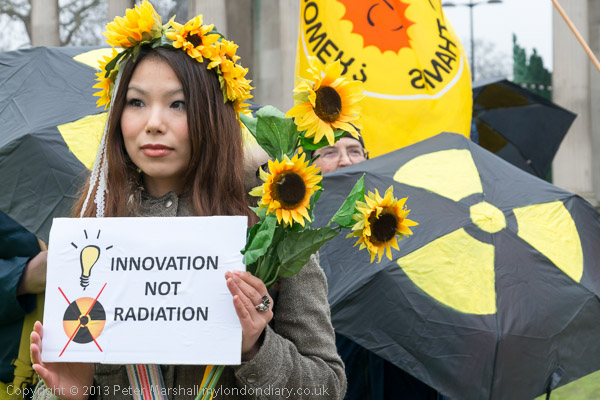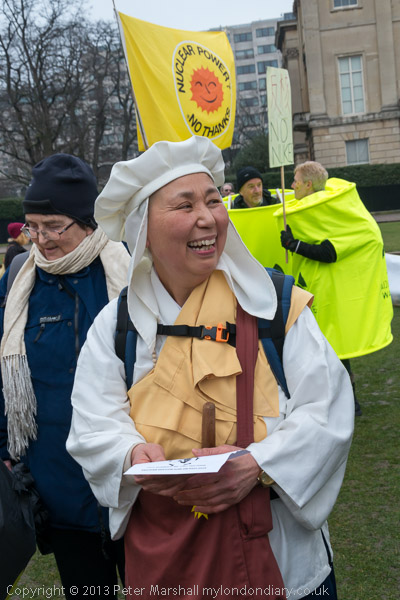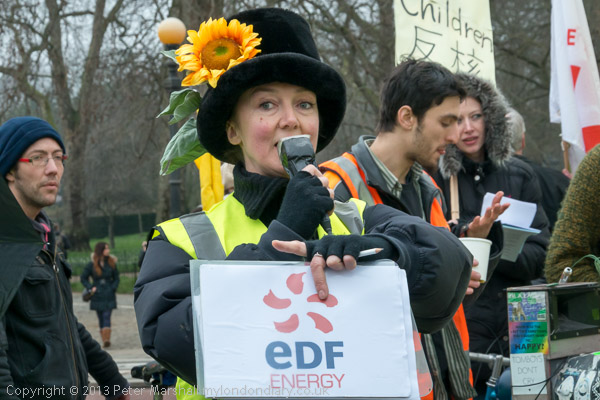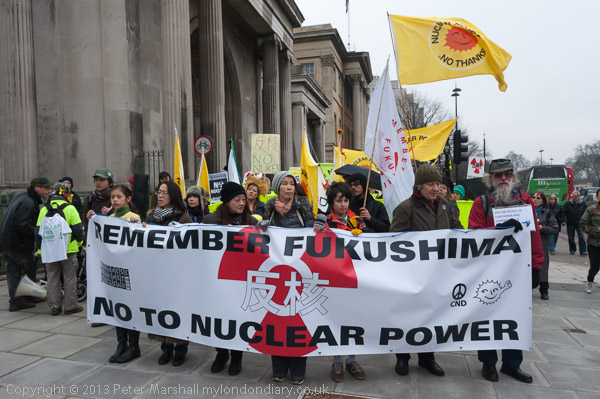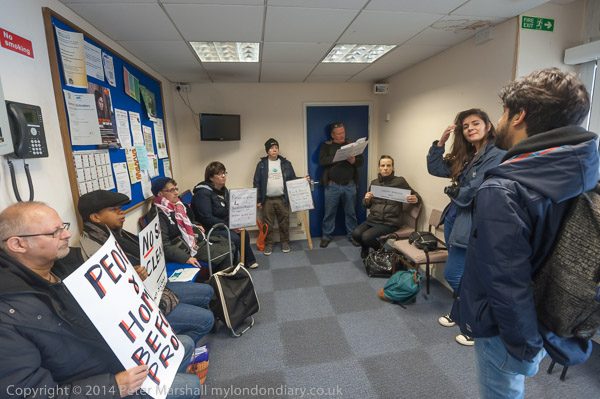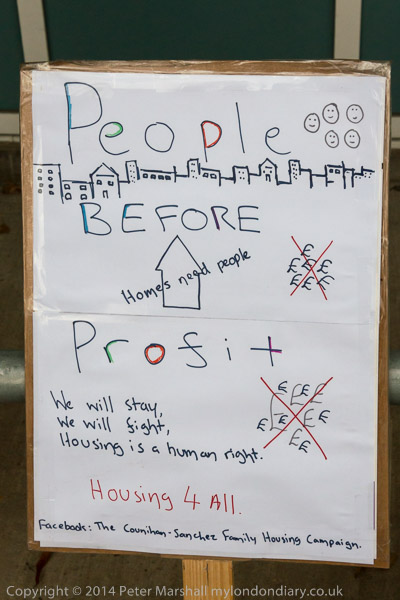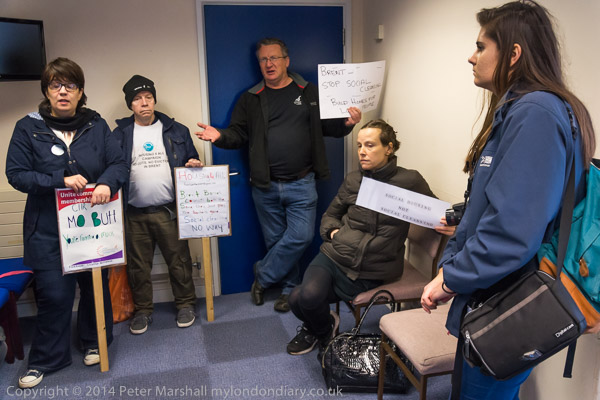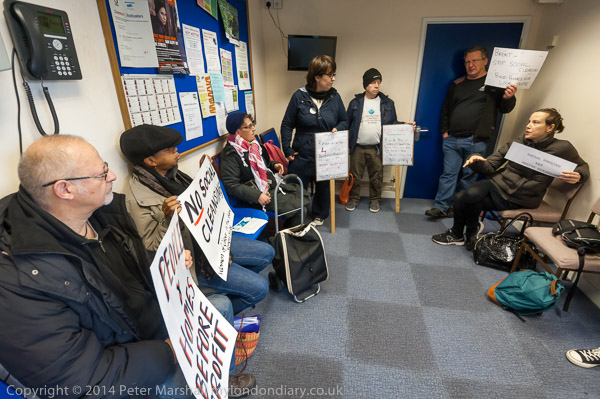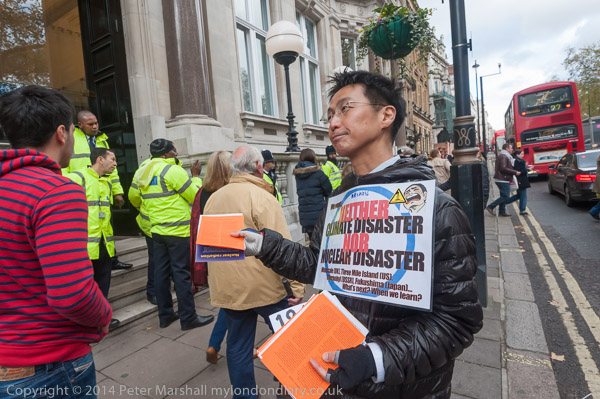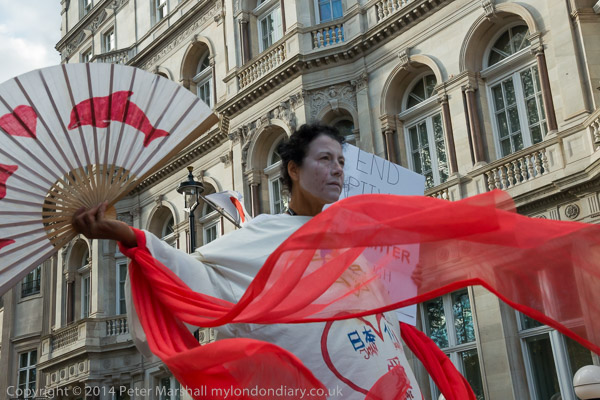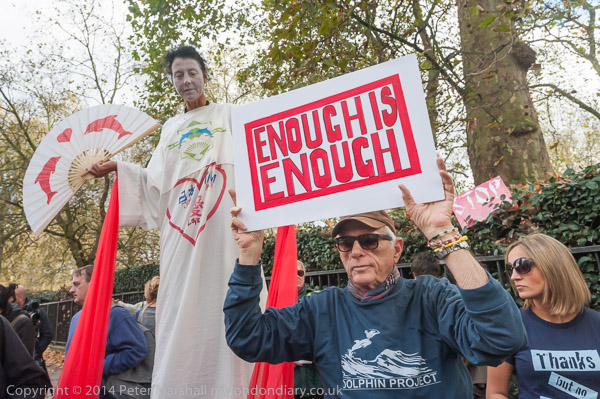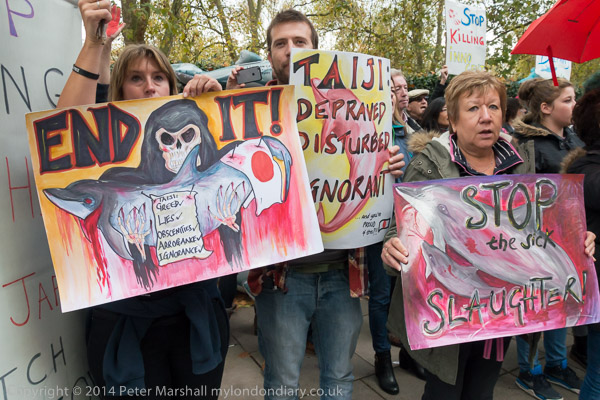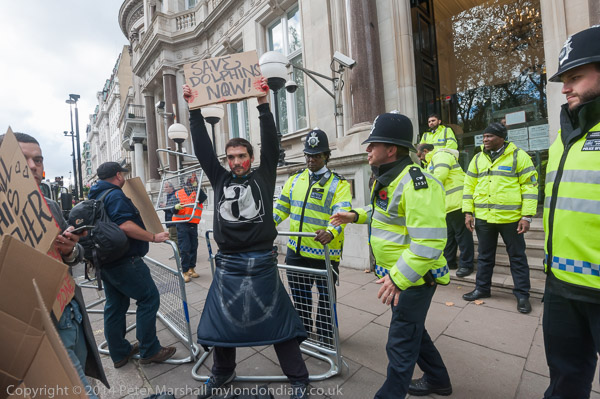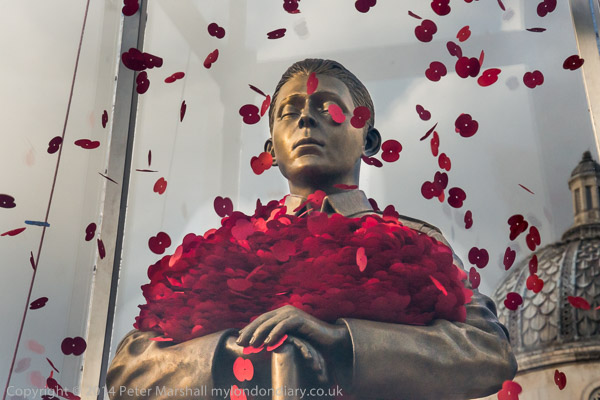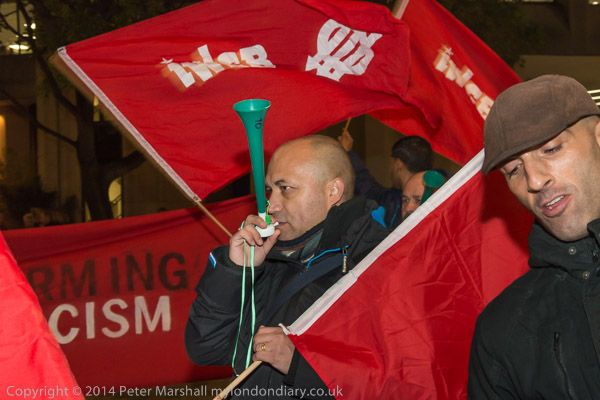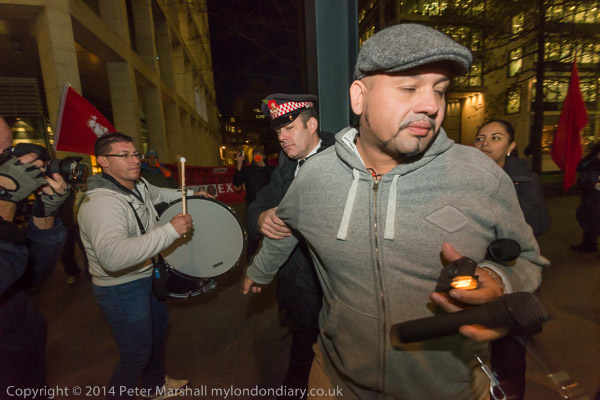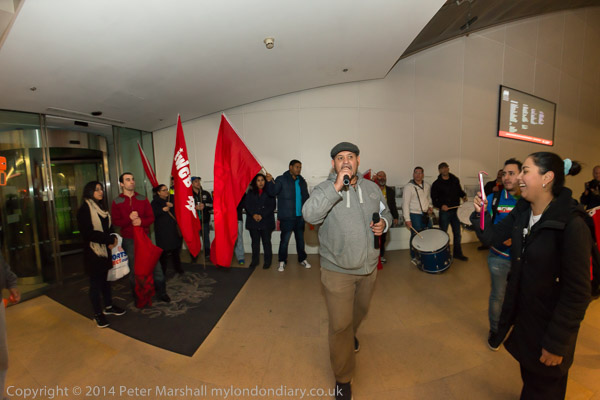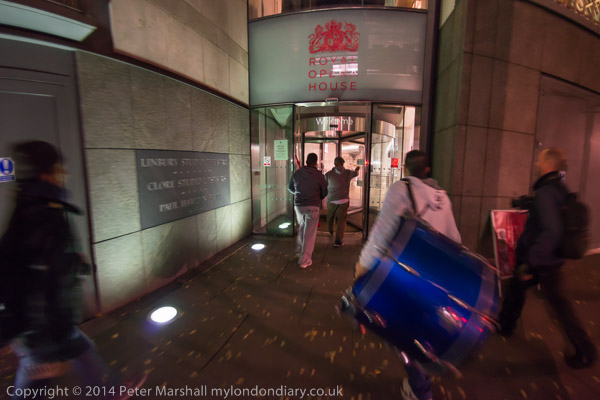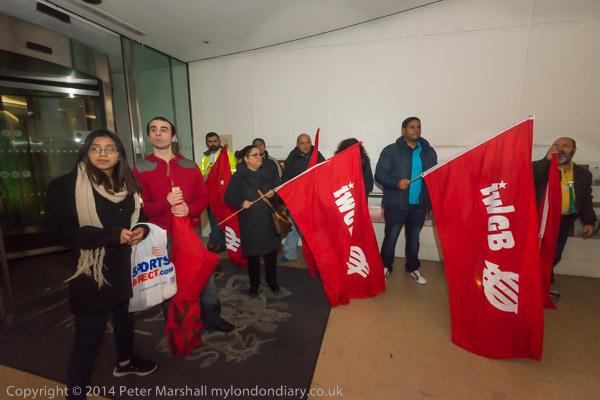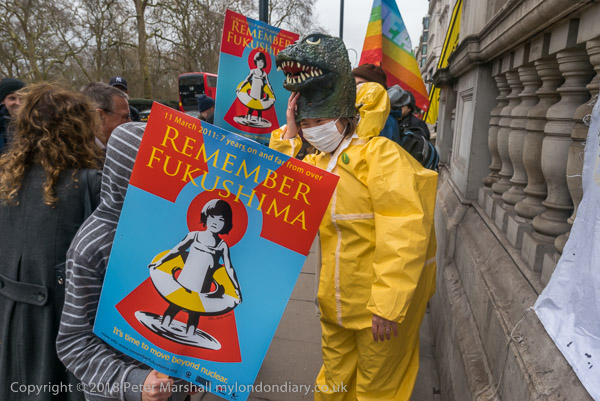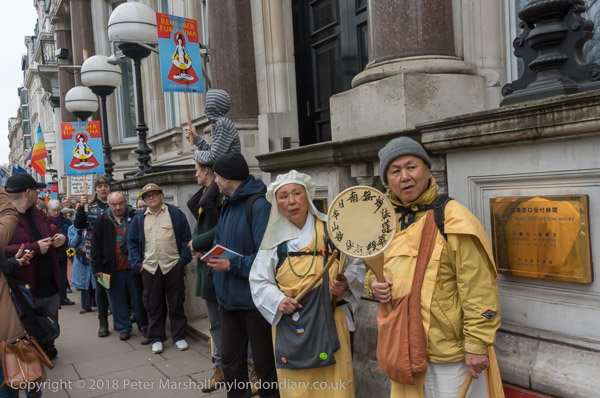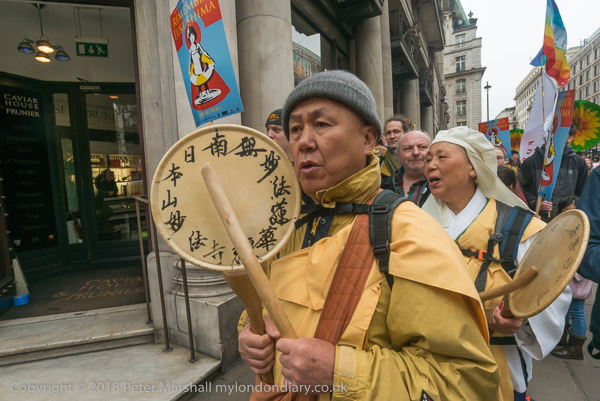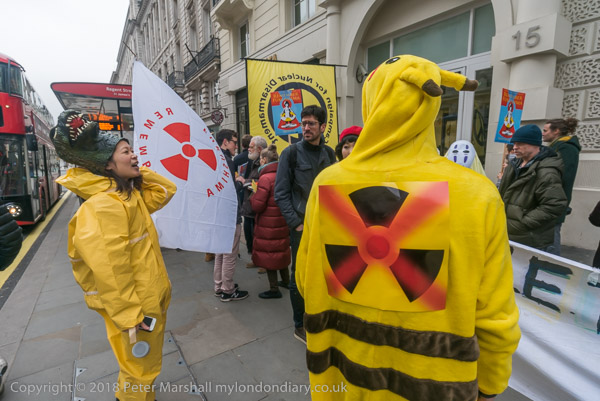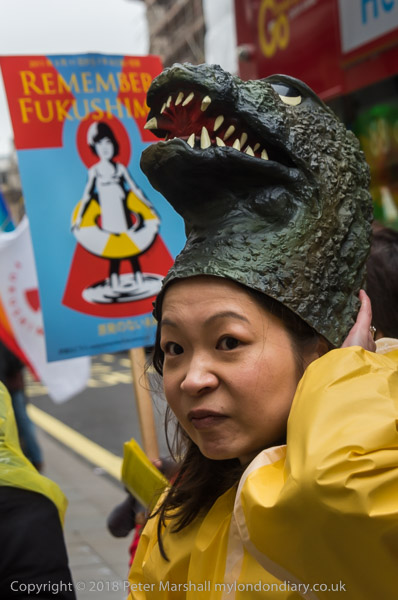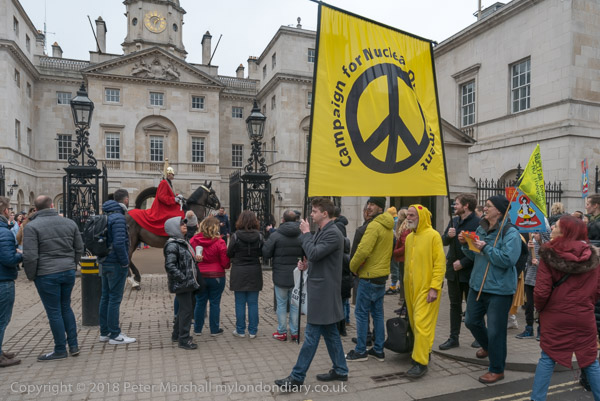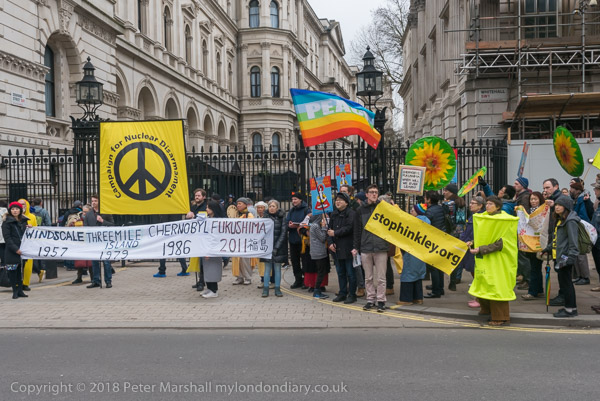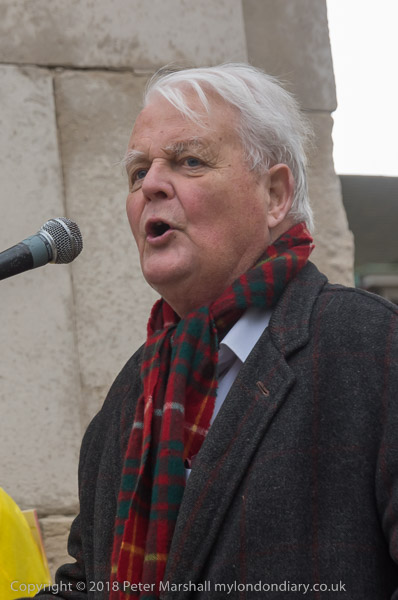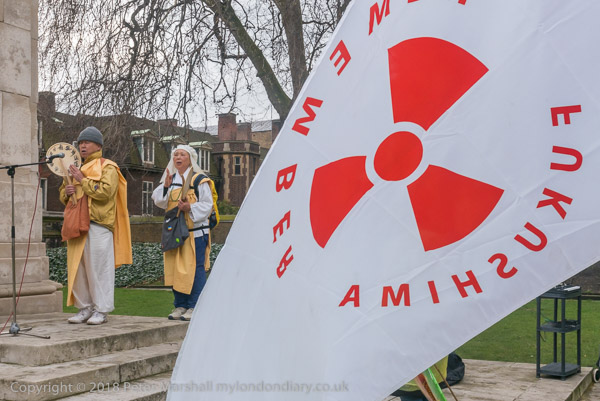Tibet, Syria, Fukushima, EVF & Lions – Protests in London on Saturday 15th March covered a wide range of issues across the world. Another varied day for me in town.
London March for Freedom for Tibet – Downing St
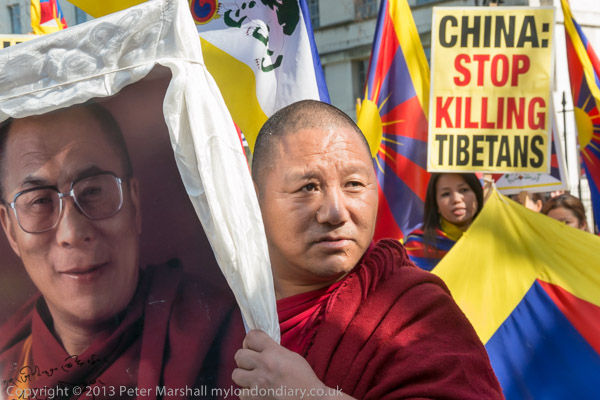
Around a thousand Tibetans and supporters of the Free Tibet campaign met at Downing Street to march to a rally at the Chinese Embassy on the 55th anniversary of the Tibetan National Uprising against oppressive Chinese rule.
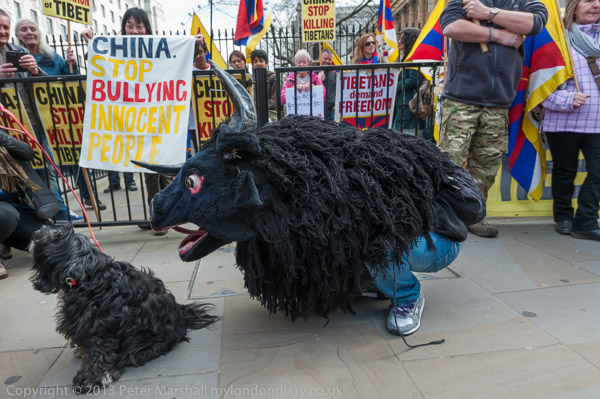
Before the start of the march they sang the Tibetan national anthem then marched up Whitehall. I left the marchers at Trafalgar Square to cover another event.
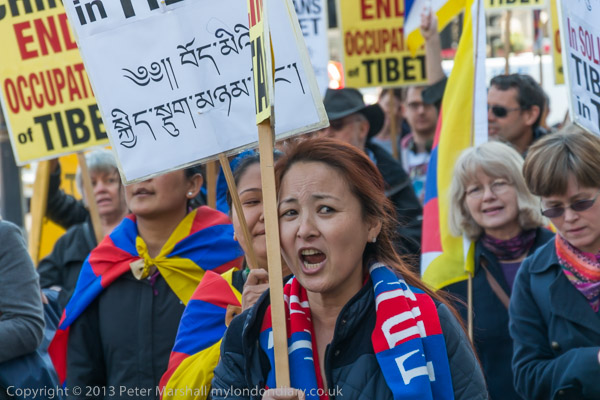
It was a colourful march, with many carrying the Tibetan National Flag or wearing items in its colours. In my post on My London Diary I wrote more about Tibet and the brutal Chinese regime there along with many more pictures.
London March for Freedom for Tibet
Syrians March for International Action
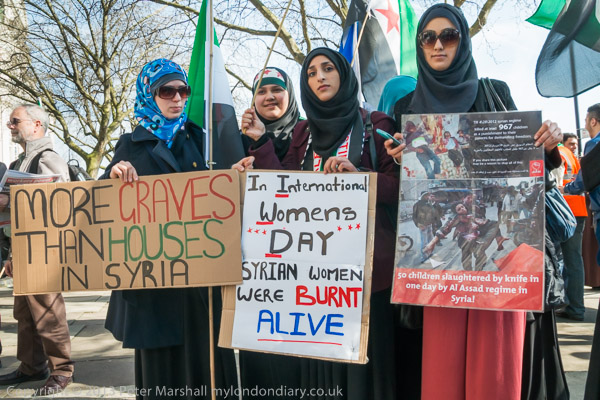
Before going to Downing Street I had gone to Hyde Park Corner where Syrians were gathering at the start of their march to Downing St on the third anniversary of the start of their fight for freedom to show their commitment to the cause and their solidarity with fellow Syrians inside and outside Syria.
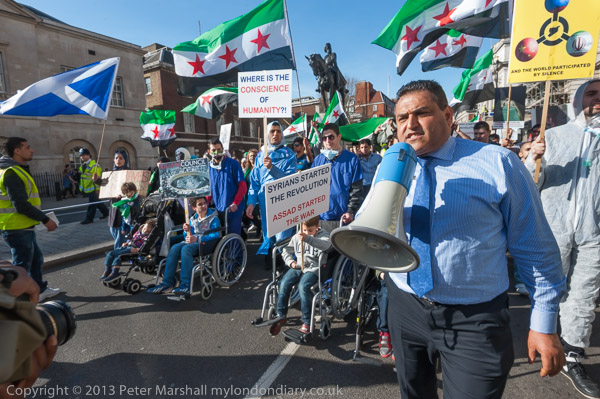
They were calling for the international community to help them get rid of the Assad regime which had murdered over 150,000, seriously injured 500,000 and imprisoned 250,000 people in Syria. 1.5 million refugees had fled Syria and over 4.5 million were internally displaced and recently Assads forces had started using chemical weapons.
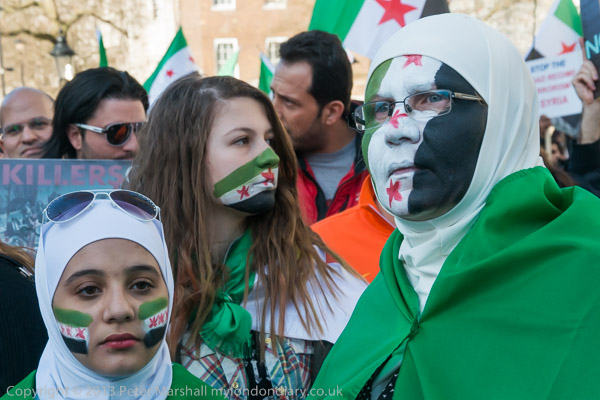
I left Piccadilly as the march was about to leave and met them again as they turned into Whitehall and began their protest opposite Downing Street. Unfortunately the west was not prepared to stand fully behind the Syrian revolution, with Turkey very much opposed to the autonomy it was providing for the Kurds and supporting ISIS and Russia stepping in to support Assad.
Many more pictures on My London Diary: Syrians March for International Action.
Fukushima Nuclear Melt-down Remembered
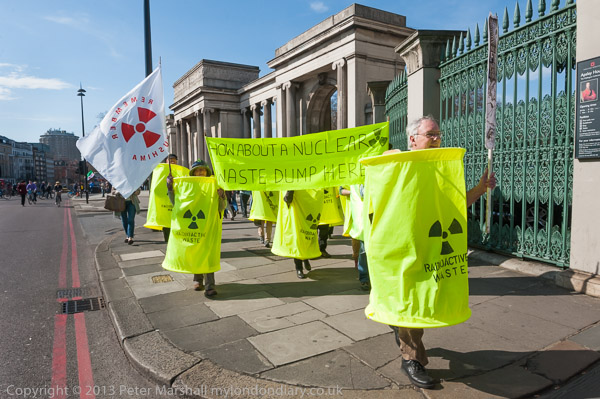
Also at Hyde Park Corner were protesters on the third anniversary of the nuclear melt-down at Fukushima, including many Japanese, marching to remind the world of the dangers of nuclear power and nuclear weapons.
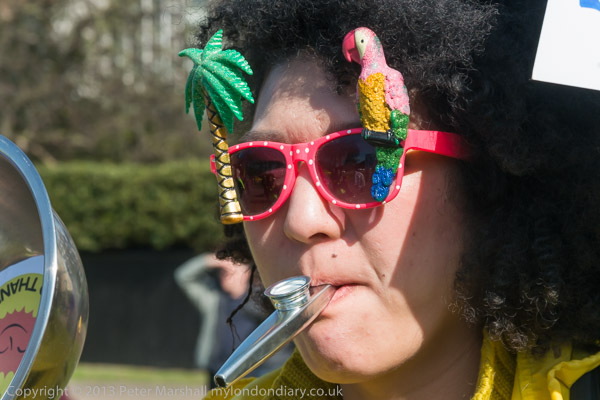
They were led by a group dress as flurescent barrels of roadioactive waste, while others were dressed up in various ways and some carried giant sunflowers. It was a fairly small group but made a colourful impression as it made its way first to the Japanese Embassy.I left them as they arrived there.
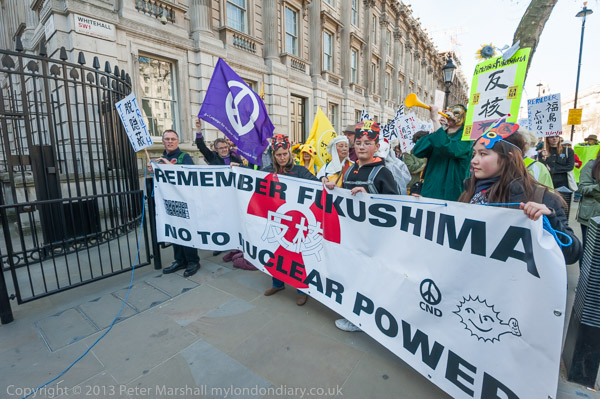
I met the group again as it arrived at Downing Street where they stopped for a short protest and photographs in front of the gates before moving on to a rally in Parliament Square. But I had other things to do.
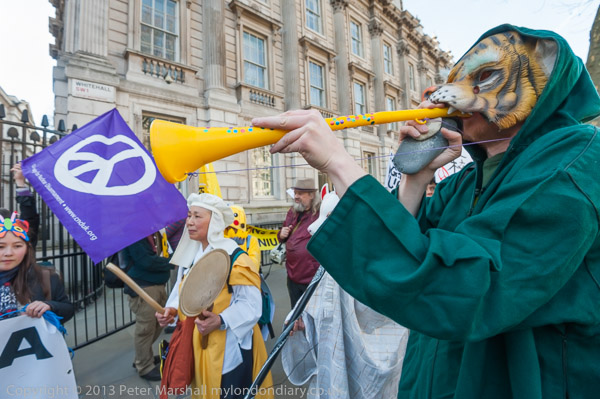
Many more pictures at Fukushima Nuclear Melt-down Remembered.
English Volunteer Force march in London
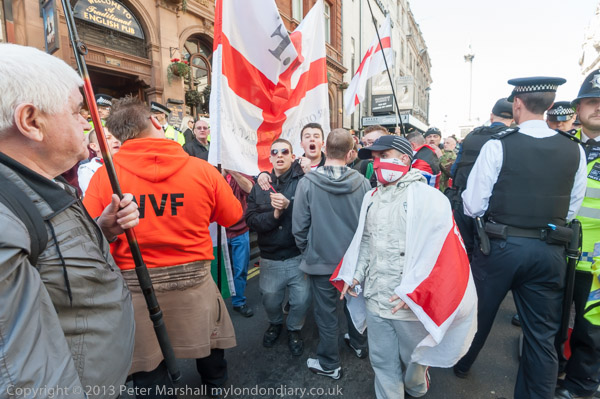
I met the English Volunteer Force, combining a number of right wing ‘patriotic’ groups outside the Lord Moon of the Mall at the top of Whitehall just a minute or two before their march to Parliament Square began from there.
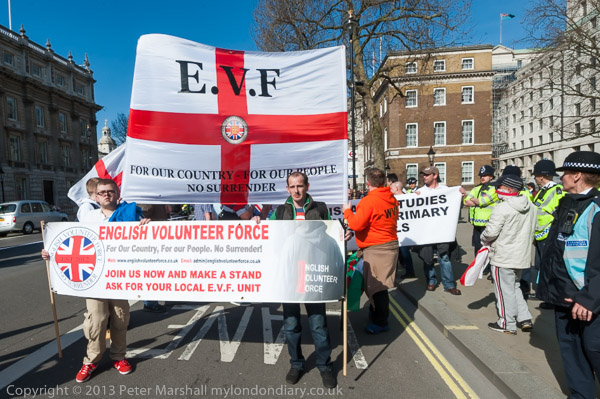
I had a little trouble getting there through a loose line of police who were there to ensure that the anti-fascist opposition to the march were kept well away. The around a hundred EVF supporters were accompanied by rather more police as they marched down Whitehall, but I was able to walk with the and to talk to a few of the protesters who knew me from earlier right-wing events.
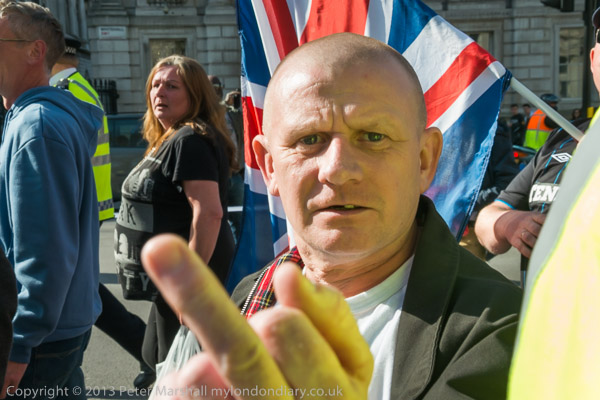
They seemed pleased that I was covering the event, but as I reported in 2014, “one man came over and shouted at me, pushing my camera into my face. I complained to police at this assault but they simply pushed me away. Later the same individual came and threatened me, and a police officer did ask him to stop, though it seemed rather half-hearted given that he was clearly breaking the law.“
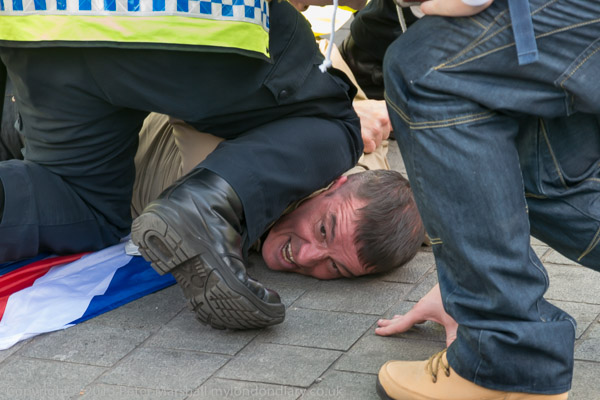
The major police effort was directed against the larger number of anti-facists and was largely successful in keeping the two groups apart and enabling the EVF to hold their rally as planned in Old Palace Yard. I saw several arrests of EVF supporters who tried to attack the anti-fascists. Police had kettled some of these briefly but they were soon allowed to leave so long as they went away from Parliament.
You can read more about the event and see more pictures at English Volunteer Force march in London.
Save Our Lions – Ban Canned Hunting – Trafalgar Square
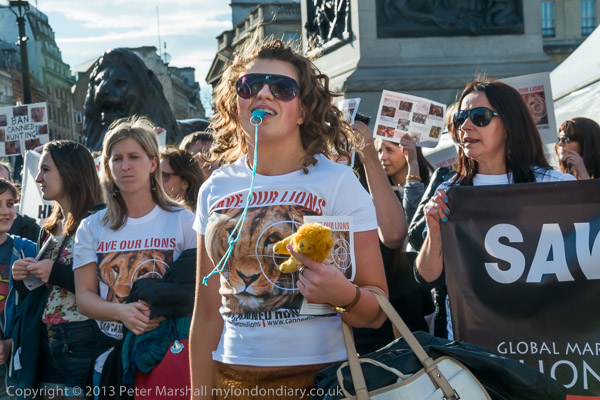
I walked up to Trafalgar Square where several marches from different starting points in London were combining for a protest calling for a ban on the ‘canned’ hunting of captive lions by wealthy trophy tourists.
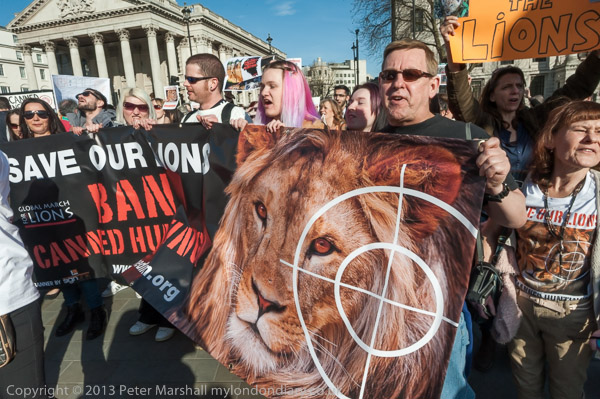
‘Canned hunting’ is big business in South Africa, with more than 8,000 lions in captivity, bred on lion farms and over 160 lion killing camps. These lions are raised without fear of humans and are often drugged to make them easy kills.
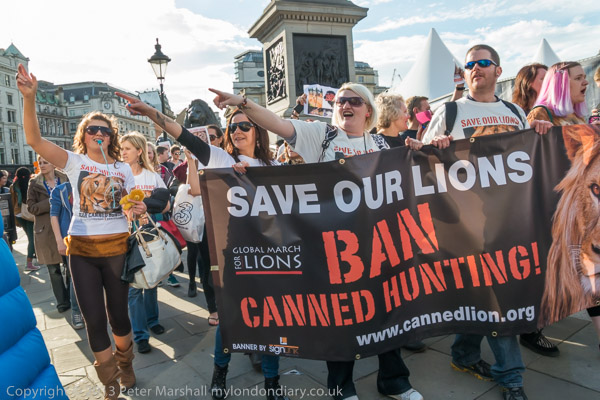
The tourists kill male lions and buy the lions heads stuffed and mounted as trophies. The bones fetch high prices in the Far East for use in ‘medicines’ or ‘aphrodisiacs’ though they have no testable beneficial effects.
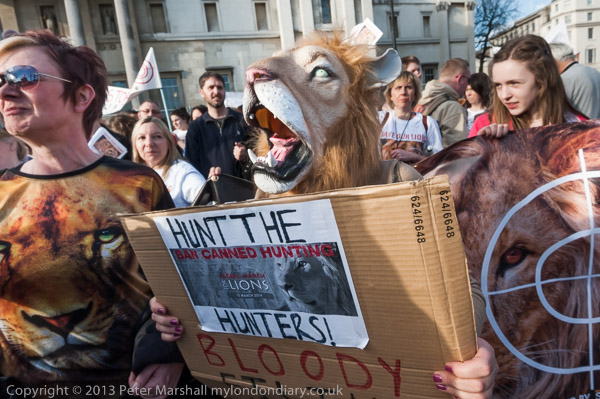
Most female cubs are killed at birth with just a few being kept for breeding. The cubs are kept and tourists pay to ‘pet’ and play with them and when they are a little larger pay for the experience of ‘walking with lions’. Once they outgrow this, they are crammed into overcrowded cages in poor conditions until they are mature and can be shot.
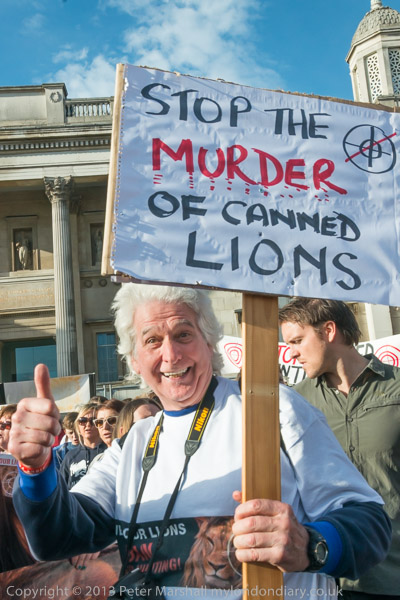
Canned hunting also threatens the wild lion population as some are captured to combat the inbreeding in captive lion populations.
More at Save Our Lions – Ban Canned Hunting.
Flickr – Facebook – My London Diary – Hull Photos – Lea Valley – Paris
London’s Industrial Heritage – London Photos
All photographs on this page are copyright © Peter Marshall.
Contact me to buy prints or licence to reproduce.
